Parc Libros
A new independent publisher (with an online store)
- Business planning
- Branding and style guide
- Book design
- Website design & prototype
- Testing
- WordPress website and storefront
Role
Product designer
Field: Books, e-commerce, independent
Oct 2020 – Feb 2021
La Paz, Bolivia
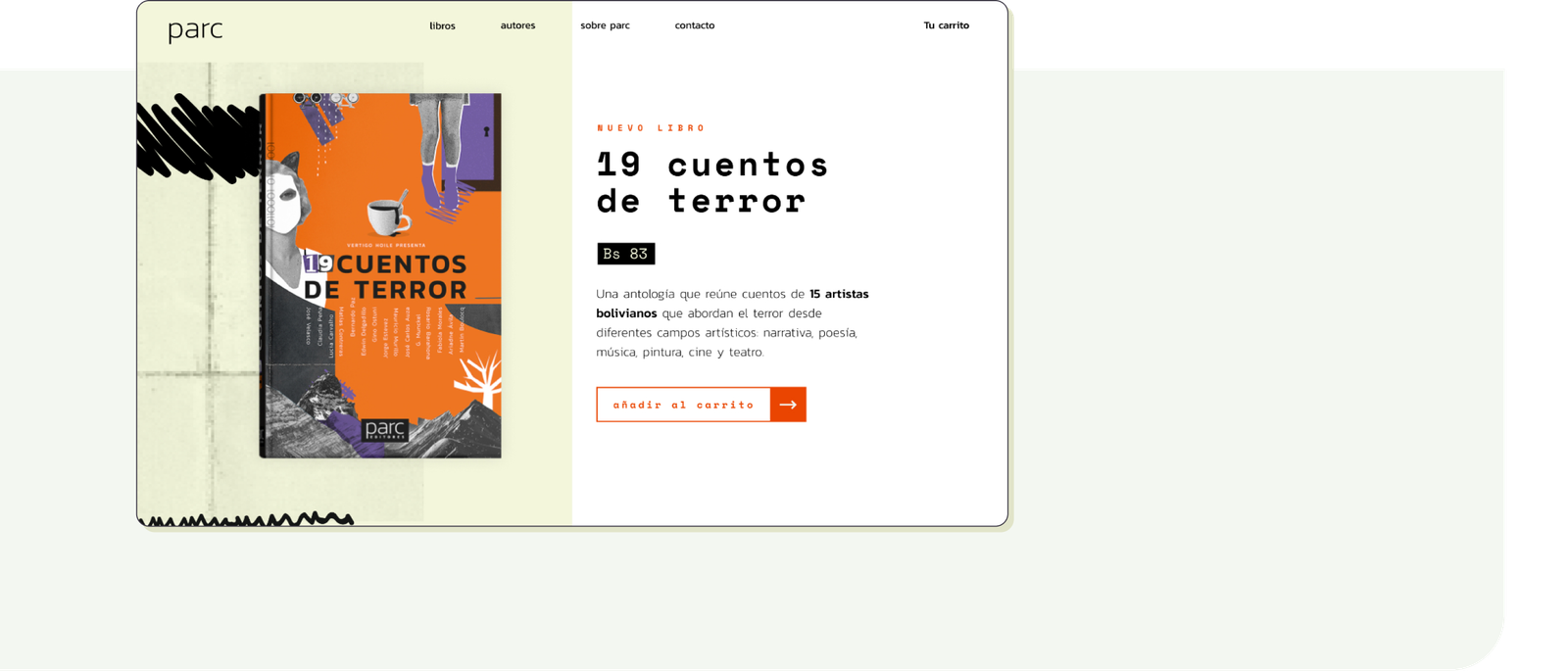
Overview
Parc is an independent publisher that was born during the pandemic when two fellow writers/editors notice, locally, the lack of small publishers with a modern and digital approach. One that can welcome new (or less known) writers to publish in short runs, promoting their books using digital tools, selling online, all this while maintaining a high-quality edition and book design.
I was fortunate to participate in the creation and ideation of the business and design all of the first products.
Understanding the problem
In Bolivia, this business (publishing and selling books) has always been difficult. In 2020, some problems became more noticeable and this allowed us to analyze and define them:
#1 problem
Lack of interest (or budget) in investing in technology or digital tools to sell online. Because of this book sales were lower than usual as customers had limited buying options and no chances of being informed about book launches.
#2 problem
With new or less known writers, it’s convenient to print in low runs at first. Usually, the slower income does not allow hiring designers or a design team to preserve the quality of the book layout and design.
Often, books (as objects) are visually generic and not very eye-catching and, therefore, harder to sell.
Our goal
Parc aims to be a small publisher with a strong digital presence, offer ways to buy books online, and a space to display launches and permanent calls for writers.
The work plan
Where to start?


Branding
The publishers named the business quickly and we needed a brand to go out into the world. After some talks, I was able to understand the personality of the publisher (and of the editors):
Daring / futuristic / digital.
I started working on the brand and a first style guide to use in the following steps.
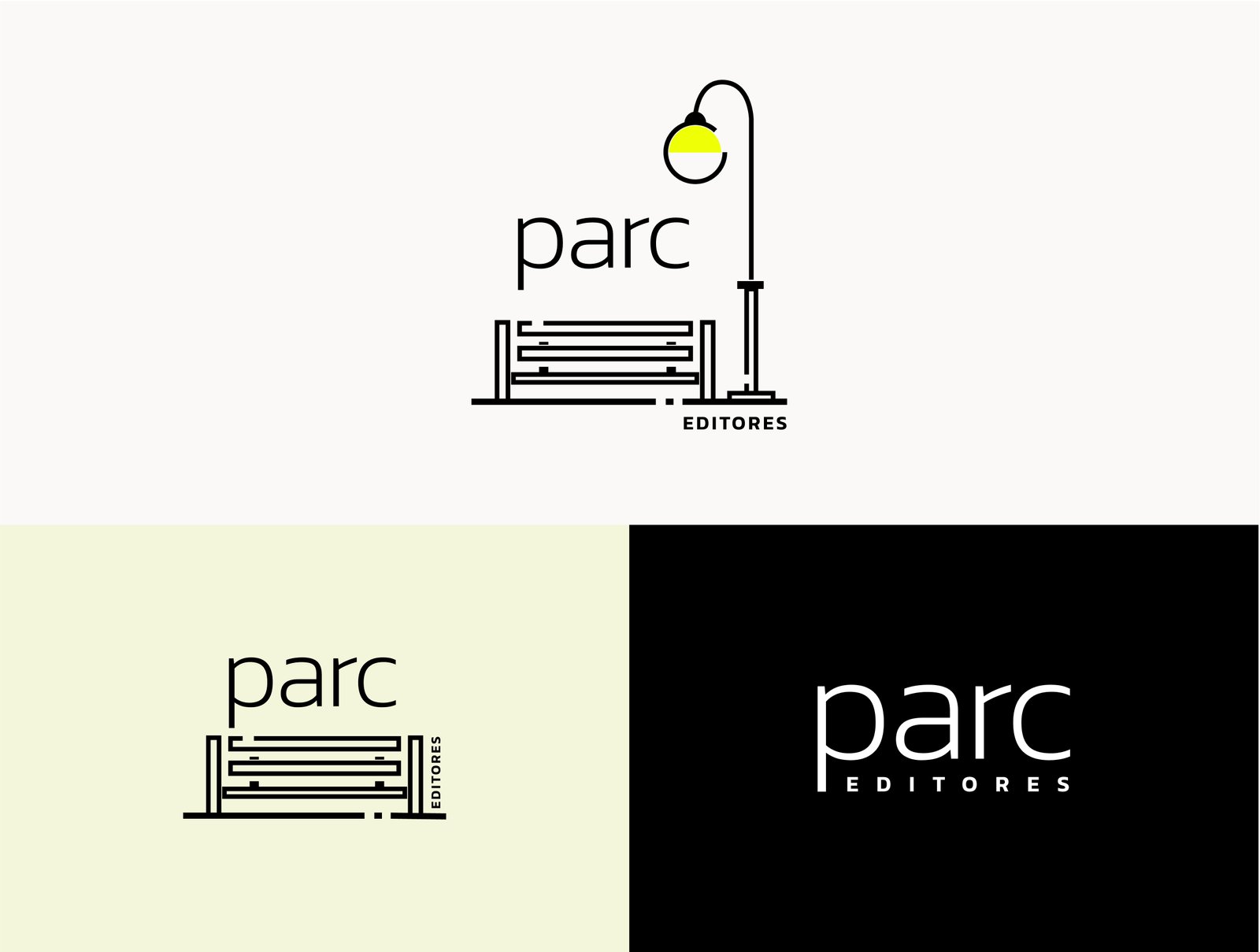
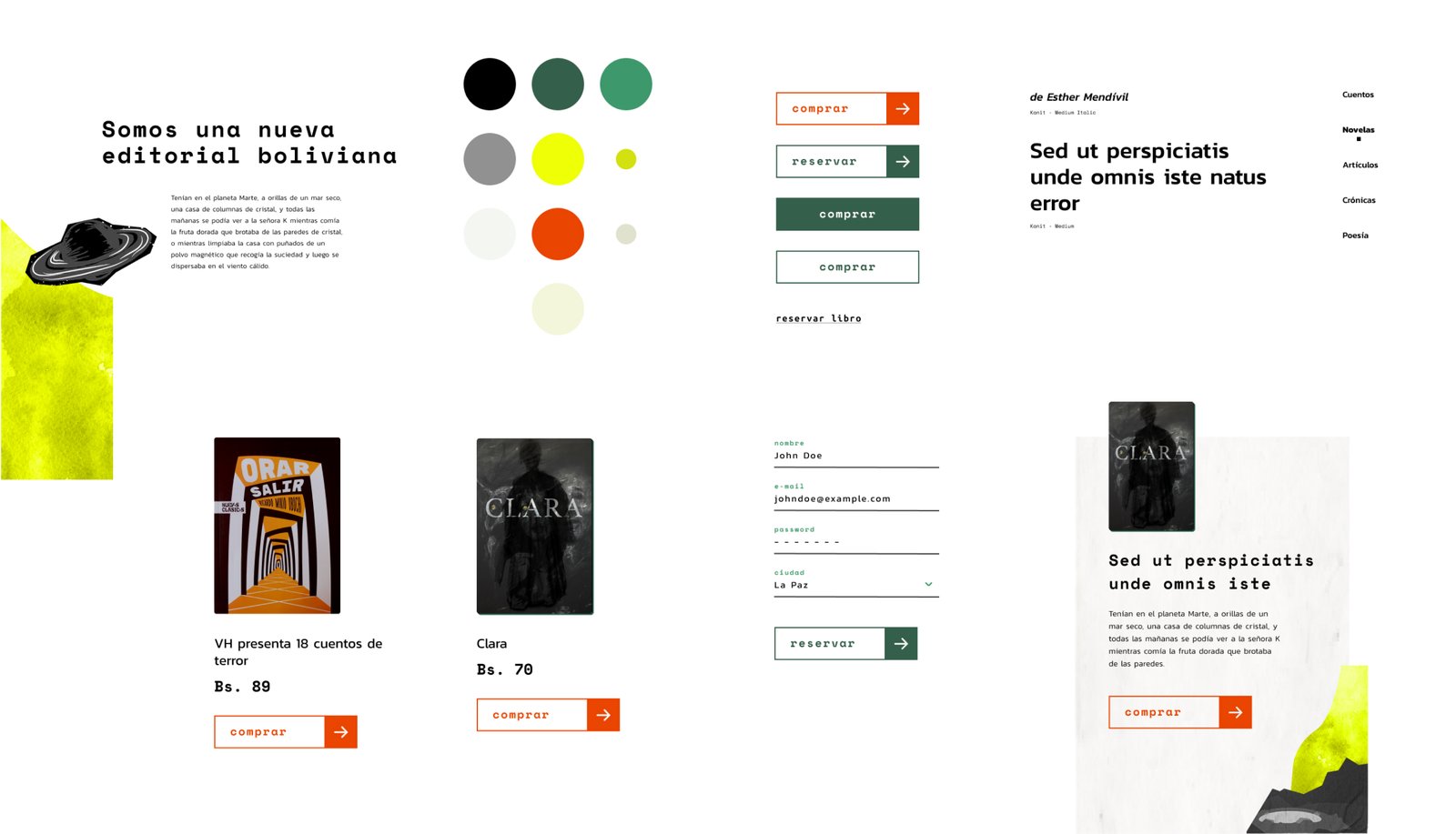
Considering the digital personality of the publisher, the style guide is intended for screen use and contains elements that can be used in the UI later on.
Social media
With nothing to sell, we started to show Parc’s brand and personality on social media, creating expectations for the first book to be published. This step was our best option: during a pandemic, there weren’t many other ways to launch a publisher.
Results: We slowly started to get organic followers interested in the launch of the first book, and also some young writers interested in publishing.
Users for future validations: On social media, we discovered an interesting group of book lovers between 20 and 35 years old of La Paz. Later, for testing, we contacted 5 from this group who agreed to participate.
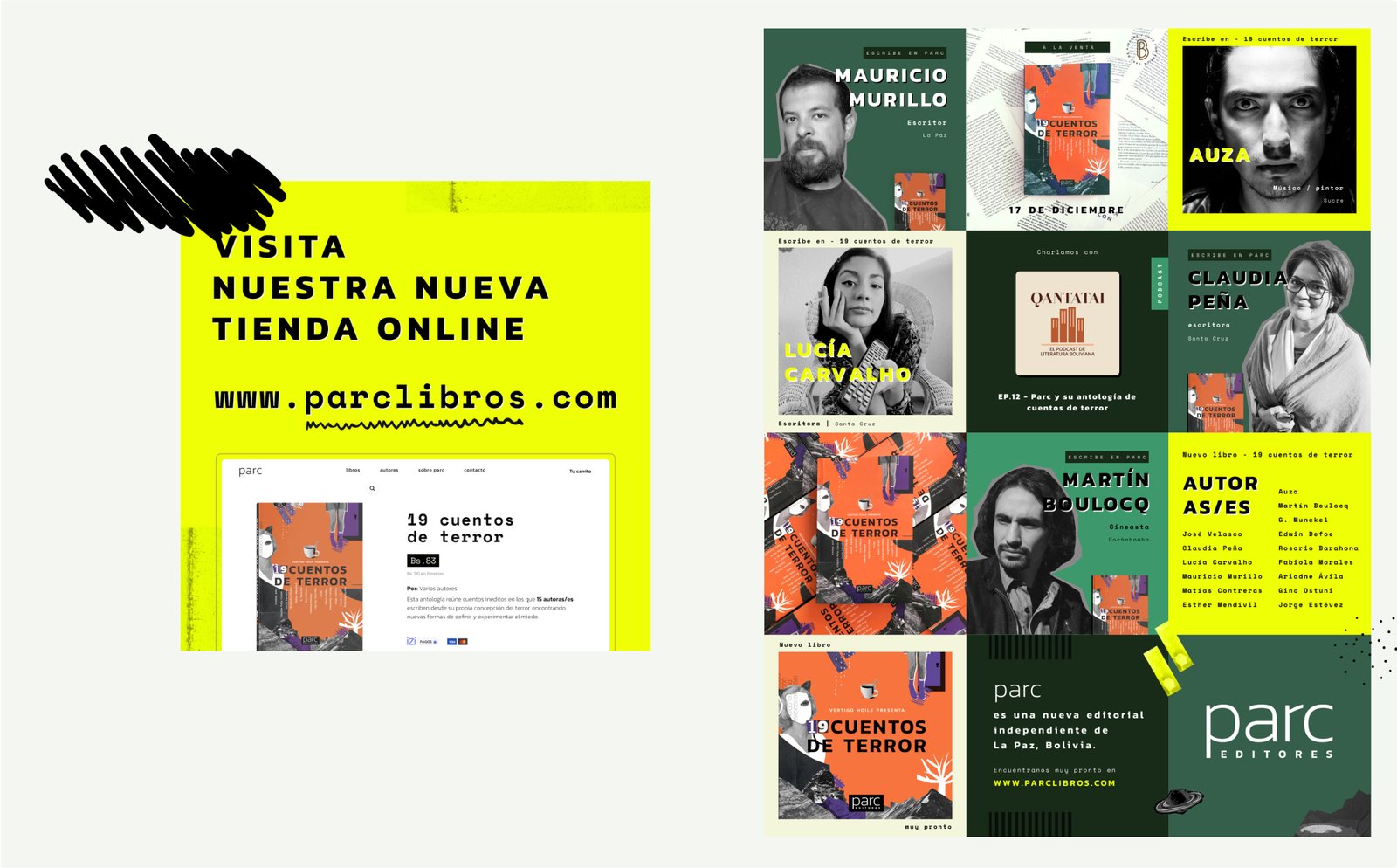
Our social media layout
The first book
For the first product, the editors decided on a book that brought together horror stories from 15 different authors, all from different artistic backgrounds and cities, so to capture the attention of a wider audience.
So I created our first product!
The horror genre was ideal to showcase the daring personality of parc.
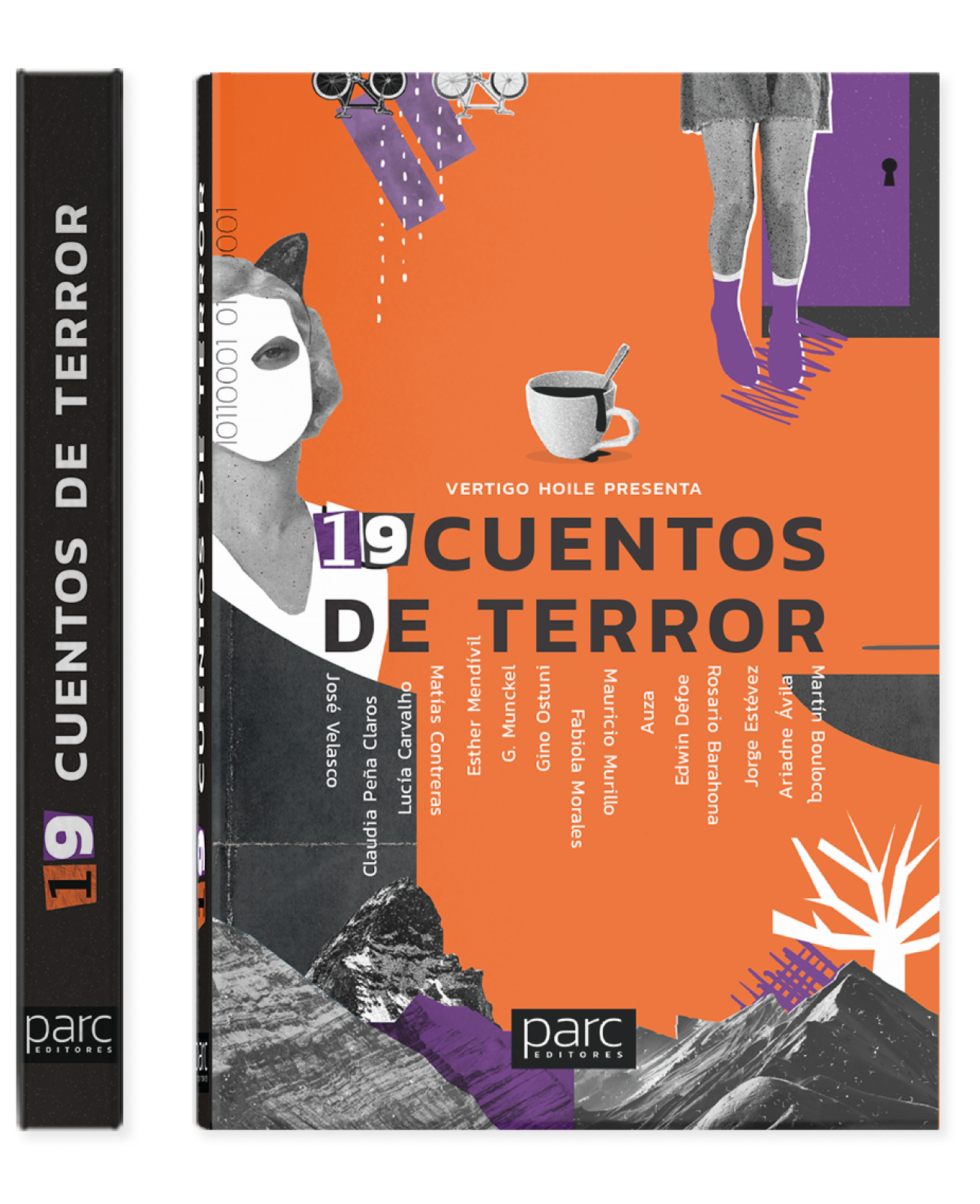

Consistency
Part of my work was to ensure that the layout and design quality of the books remain consistent. I created a simple layout and design guide to be used in this and subsequent publications.
This allows for hiring less experienced designers or having non-designer people working on book design.
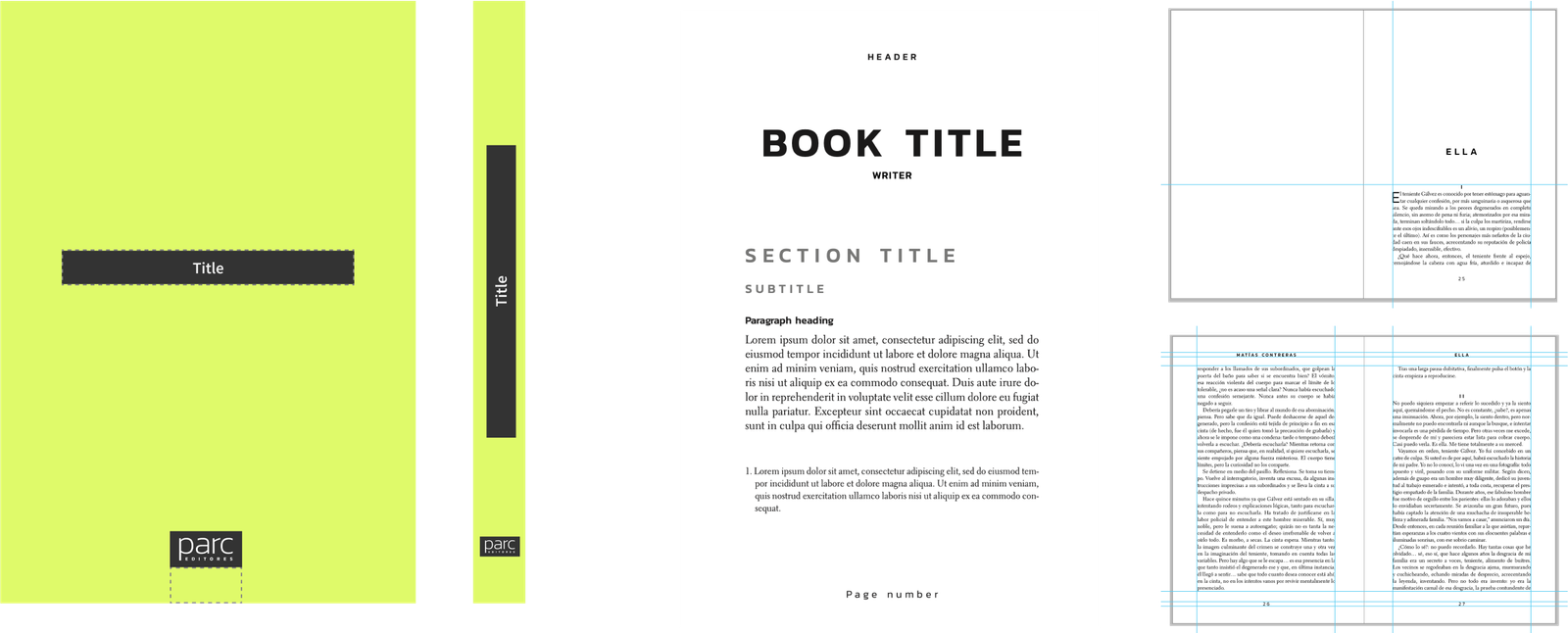
Online-store: Ideation
We have already decided that we would sell online. But what content should we display on the website? And in what order? The team came up with two possible solutions:
#1
Start the user journey with a presentation of the publisher and its philosophy and then show access to the products.
In this case, it’s assumed that the audience has an interest in learning about the publisher and its editors, and knowing this motivates them to buy a book.
#2
Start the journey with a book display and access to their characteristics, with visual emphasis on the products, leaving the presentation of the publisher and editors for a secondary page.
Completely product-focused, but with options for those curious enough to learn about Parc and its methods.
Prototyping and validation
We created prototypes for two websites, simulating different stores with different names and branding, but offering the same book.
We contacted people who showed interest in the book on social media, the test was carried out with six users. At the end of the test, the users had to decide whether they still wanted to buy the book and from which store.
Site 1: The salesman
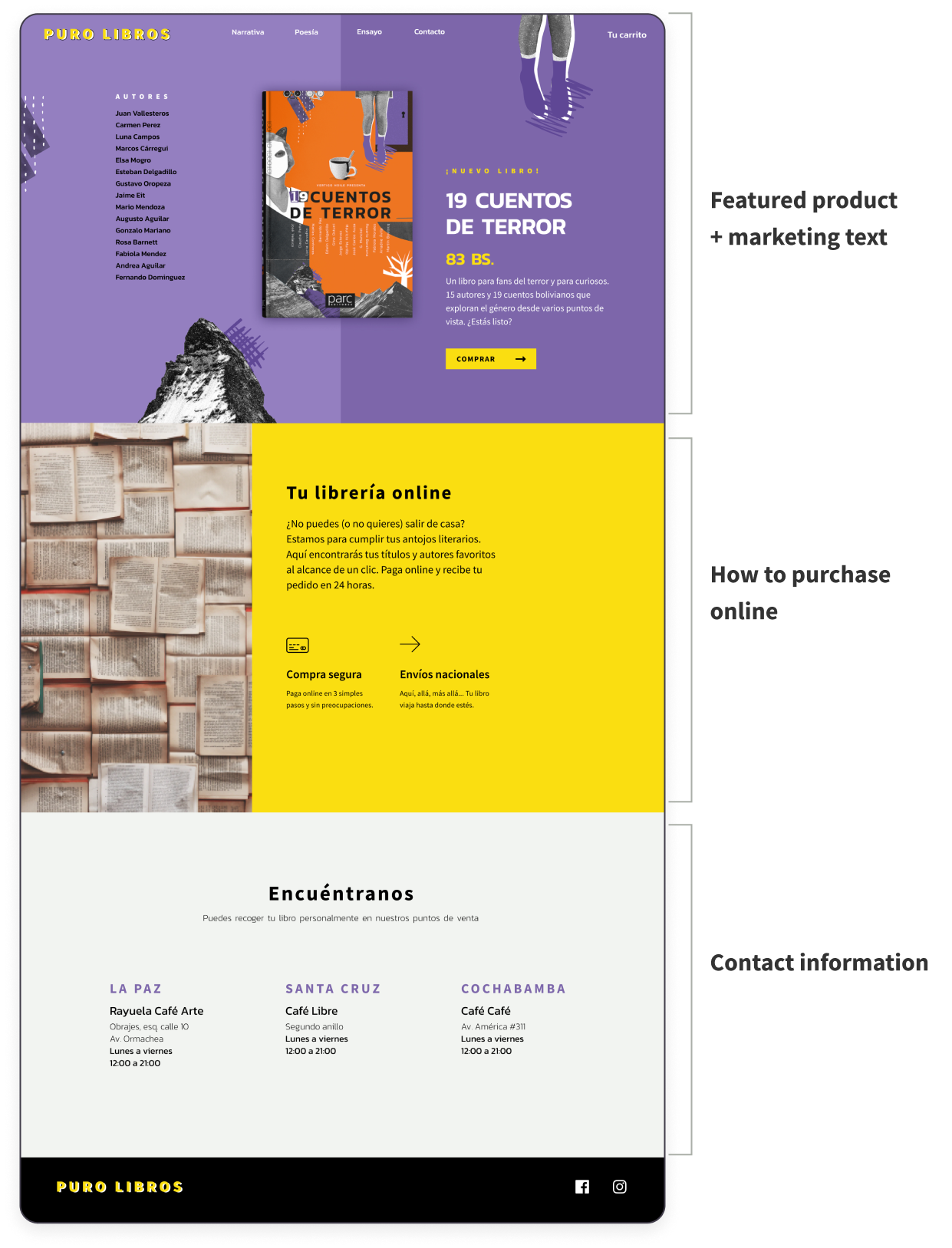
Site 2: The idealist

Most important findings
Findings that allowed us to create the final sitemap, content, and design:
#1
Although users perceived the attributes of the brand and showed interest in the visual design of option 2, most were not interested in learning about the publisher, most just got confused by this information relating the publisher to a non-profit and not a book store.
#2
Book cover design was important for the decision-making, but users needed more images and previews (and even videos) to compensate for not being able to look through the book as they would in a physical store.
#3
Users need to learn about the shipping options and prices before starting the checkout process.
And also, along the way, I was able to correct some little but important usability issues.
Sitemap
With the validation findings, we were able to define the sitemap and structure the content.
It was easy for the editors to write content for the website, which was later reviewed to make it shorter and friendlier.
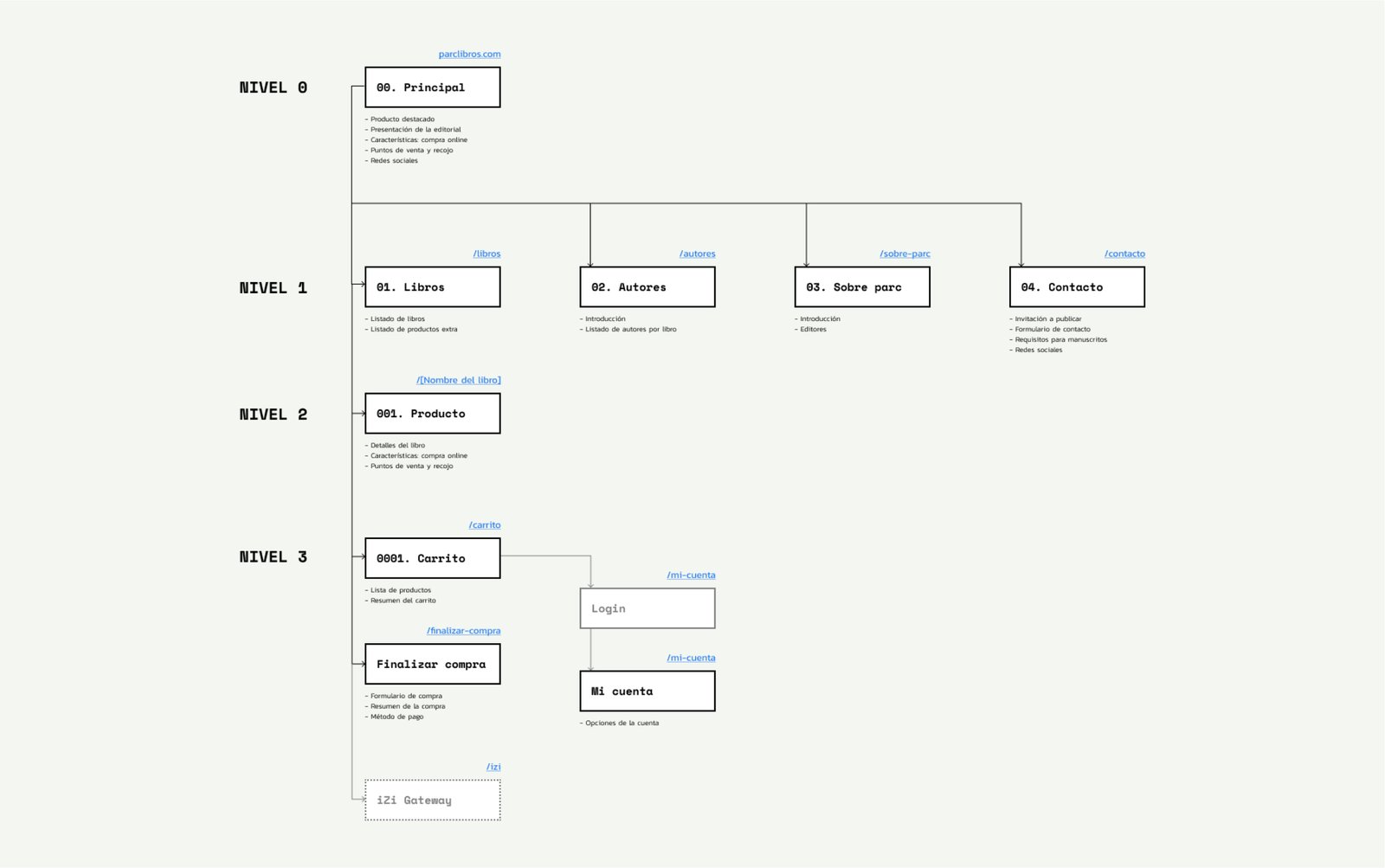
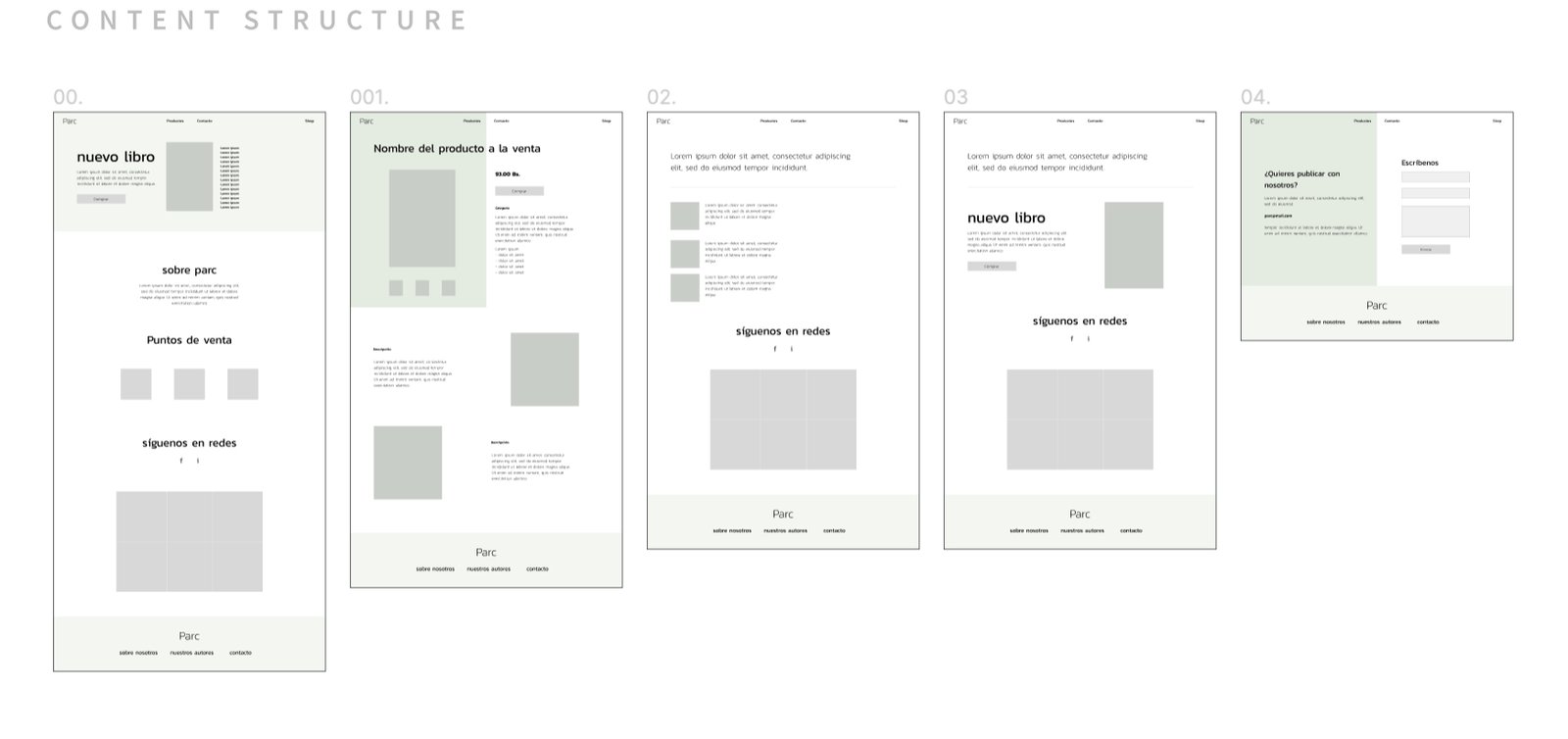
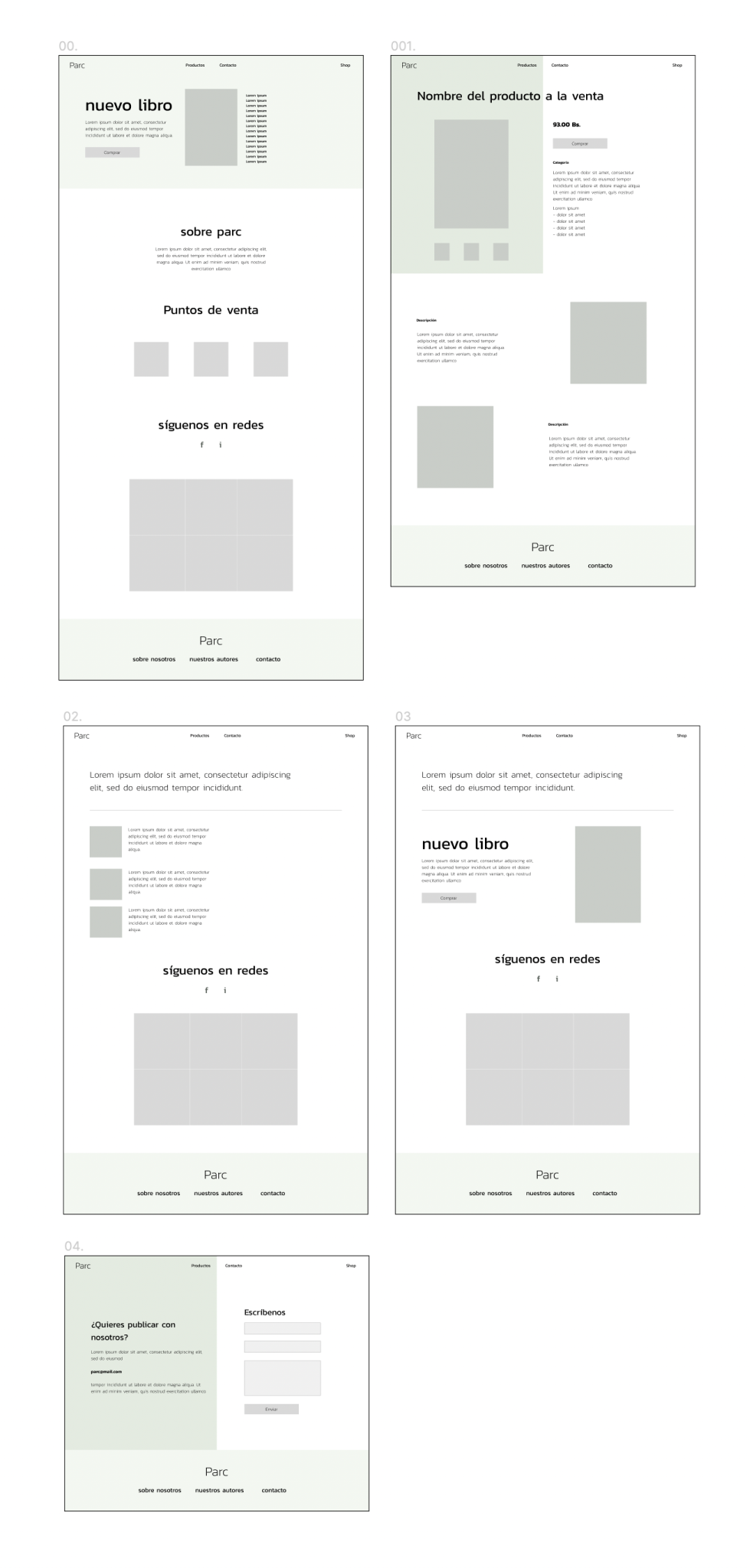
The store
Then I was able to design high-fidelity wireframes for the rest of the site. And a few weeks later, we had our store up and running (thanks to Woocommerce and lots of CSS).
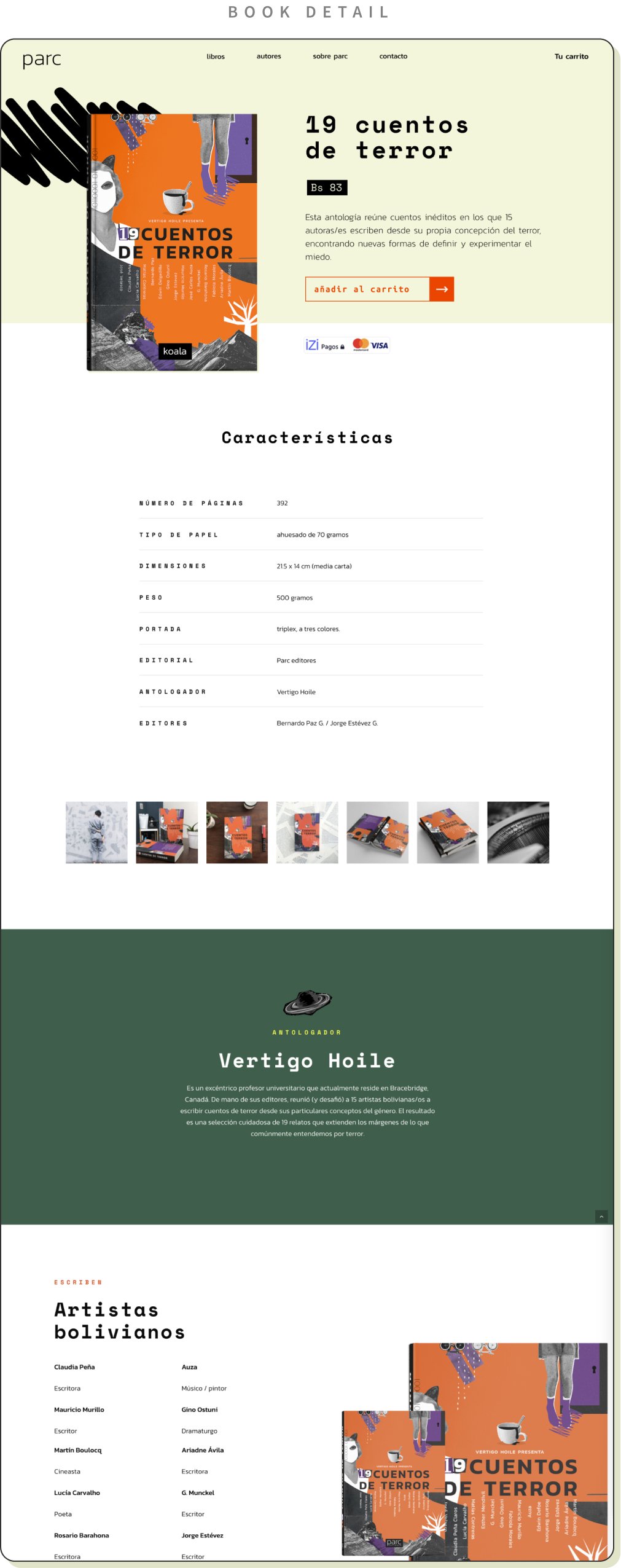

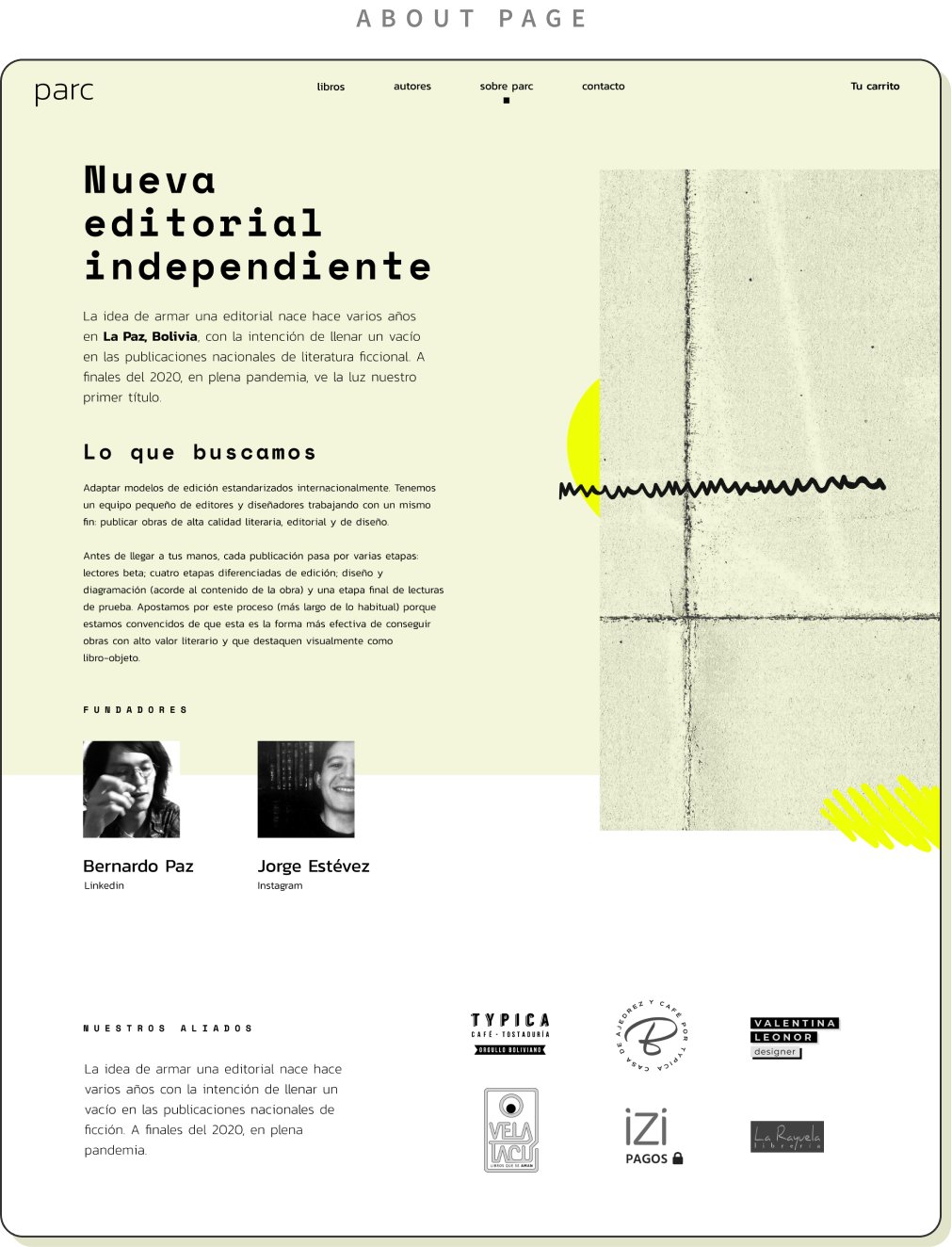
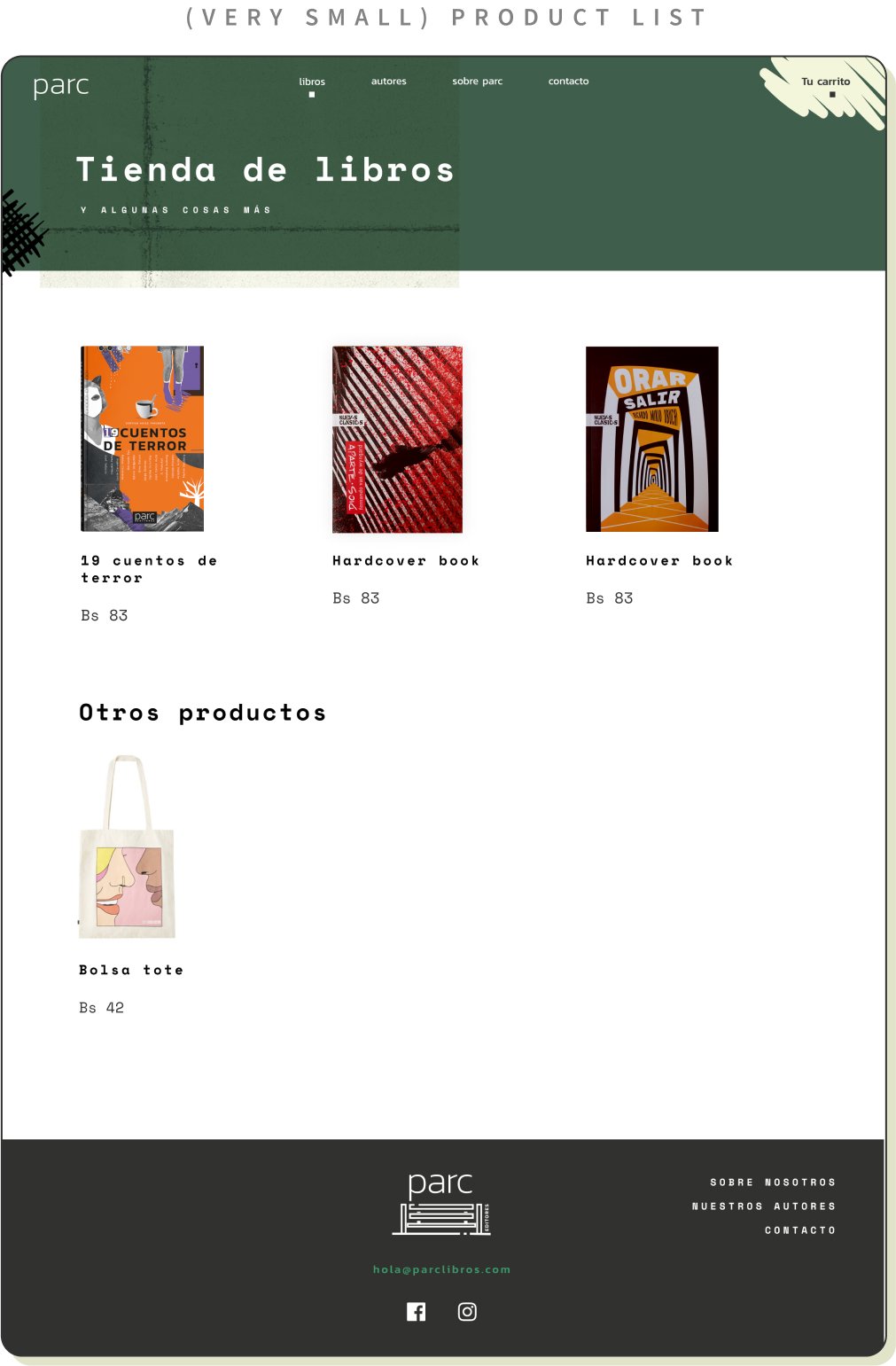
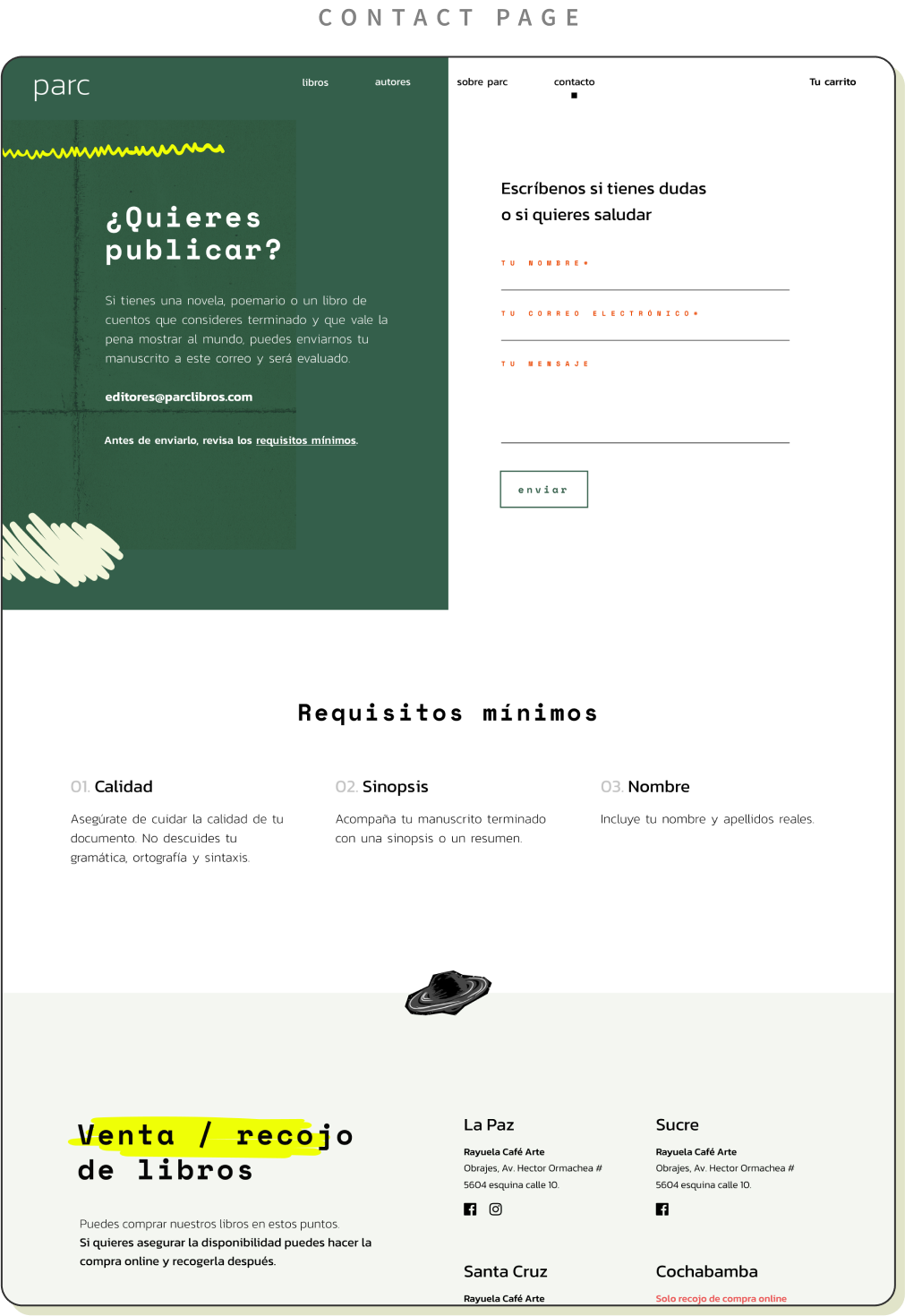
Learnings & results
Involving users from the beginning
Being able to conduct some user testing so early in the project helped us consider our customers early on and build better things for them. It also helped the rest of the team consider who is going to buy/read our books.
About writers
Many writers (mostly young) prefer to publish in a publisher that pays great attention to design work, has a strong social media presence and modern buying options. We know this now because we have received many manuscripts and comments from writers about the design of the first book.
Pretty books = more sales
The visual identity of the publisher and the design of the book itself greatly influence the buying decision.
Better banking
Most publishers started offering and selling books through WhatsApp.